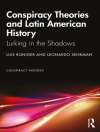In ‘The History of Duelling (Vol. 1 & 2), ‘ J. G. Millingen provides a comprehensive and meticulously researched account of the practice and cultural significance of duelling across various societies and historical periods. With an engaging narrative style, Millingen deftly intertwines anecdotes, legal perspectives, and philosophical musings, revealing duelling as not merely a violent pastime, but as a complex ritual steeped in notions of honor, social status, and morality. The work reflects the Enlightenment’s fascination with human behavior and societal norms, calling attention to the psychological and ethical dimensions that have historically governed the practice of duelling. J. G. Millingen, an accomplished physician and author, presents this work drawing on his extensive knowledge of human nature and societal constructs. His background in medicine and psychology, coupled with his acute awareness of the social mores of his time, informs his critical exploration of the motivations behind duelling. By situating the practice within a broader discourse of honor and ethical conduct, Millingen highlights the intersection of personal and societal dynamics that contributed to the prevalence of duelling in his era. For scholars of social history, literature, or ethics, Millingen’s ‘The History of Duelling’ is an invaluable resource that illuminates the intricate relationship between individual agency and societal expectations. As an essential reference for understanding the evolution of honor culture, this text invites readers to reflect on the implications of duelling in contemporary discussions of conflict resolution and personal integrity.
Yazar hakkında
J. G. Millingen was a prominent historian and author who undertook the formidable task of chronicling the cultural practice of duelling in his seminal work, ‘The History of Duelling’ (Vol.1&2). His detailed account not only explores the evolution of duelling from its inception but also delves into its sociological and psychological underpinnings. Millingen meticulously examines the historical framework in which duelling flourished, shedding light on the intricate code of honour that shaped the lives of European aristocracy and military figures. With an engaging narrative style, Millingen manages to weave a scholarly yet accessible tapestry that encapsulates the complex interplay between personal honour, societal norms, and the lethal consequences of this erstorial ritual. This comprehensive two-volume set stands as a significant contribution to the field of social history and the study of martial customs. Millingen’s work is lauded for its depth of research, and his literary style reflects an era of rich historical inquiry characterized by its pursuit of understanding the mores of past societies. His books remain key reference points for historians and enthusiasts interested in the age-old phenomena of personal combat and its implications on the law, ethics, and societal structures.












